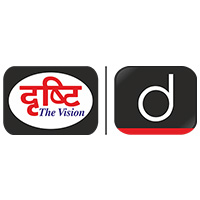Source: PIB
What’s the Excitement About?
In 2025, we will celebrate the 10th anniversary of the International Day of Women and Girls in Science (IDWGS), a significant event observed each year on February 11.
This special day is devoted to fostering equal participation and opportunities for women and girls in the fields of Science, Technology, Engineering, and Mathematics (STEM).
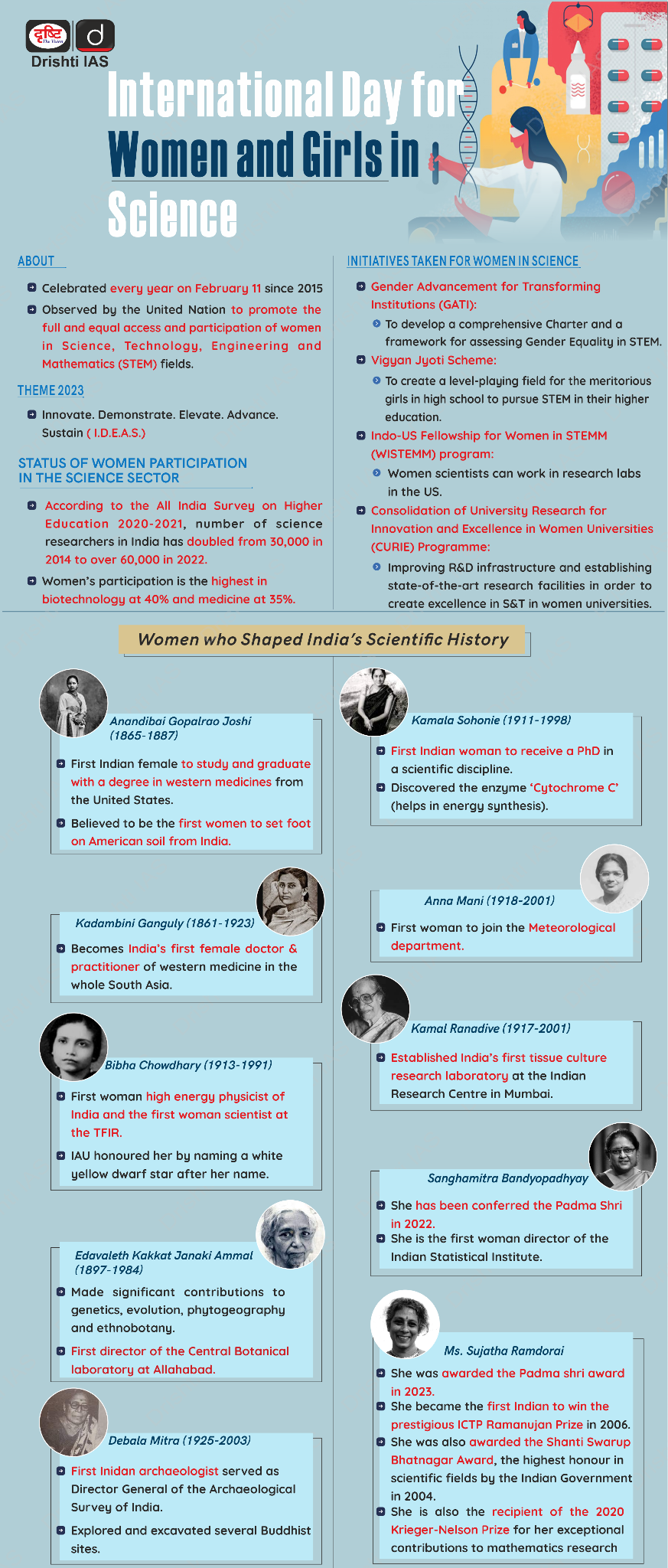
Current Landscape of Women in STEM
International Context:
Women are still significantly underrepresented in STEM education and careers globally. According to UN data, women account for merely 35% of all STEM graduates. Additionally, from 1901 to 2024, only 26 out of 650 Nobel laureates in Physics, Chemistry, and Physiology or Medicine have been women.
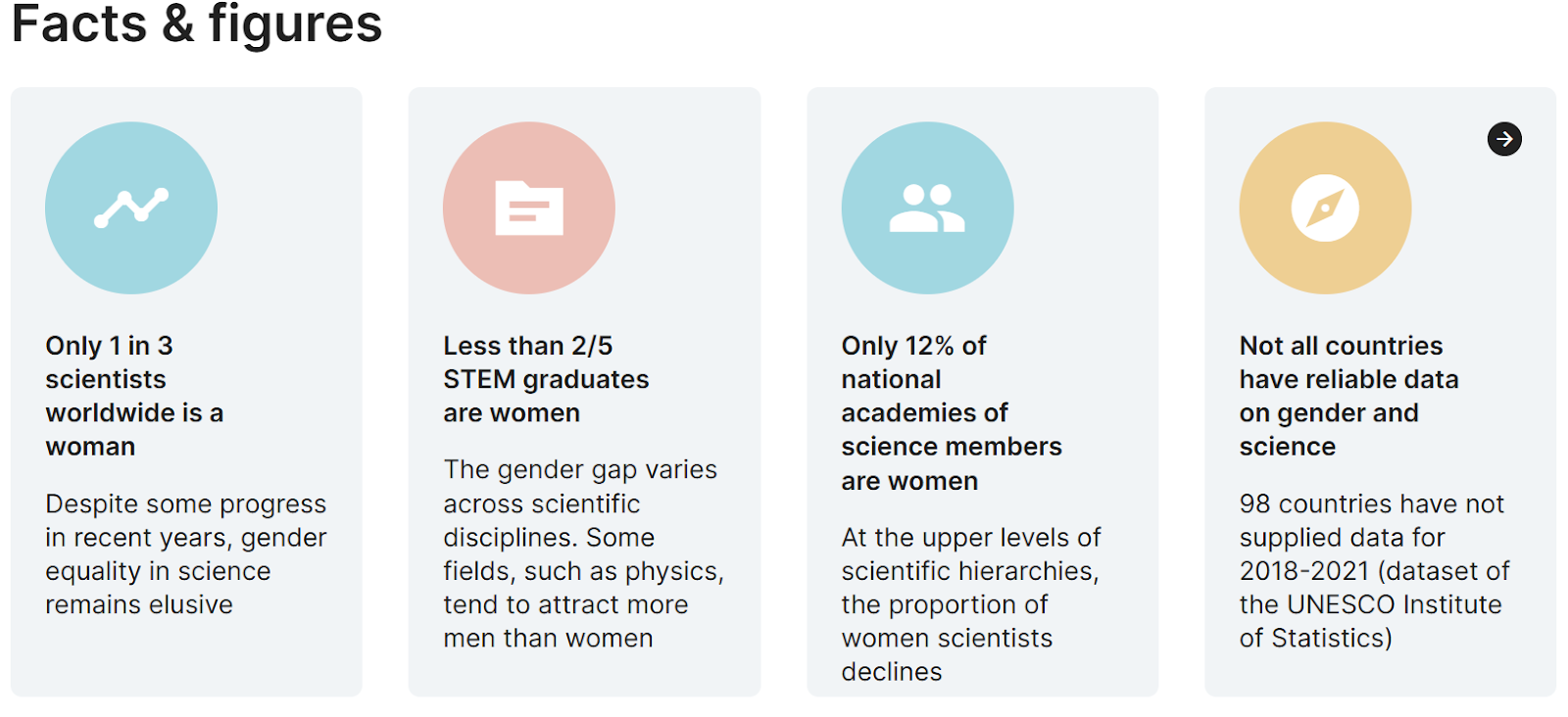
National Context:
In India, data revealed in Lok Sabha (2024) indicates that women constitute only 18.6% of the scientific workforce. Although women represent 43% of STEM students in higher education, their numbers dwindle at senior research levels and leadership roles within scientific institutions.
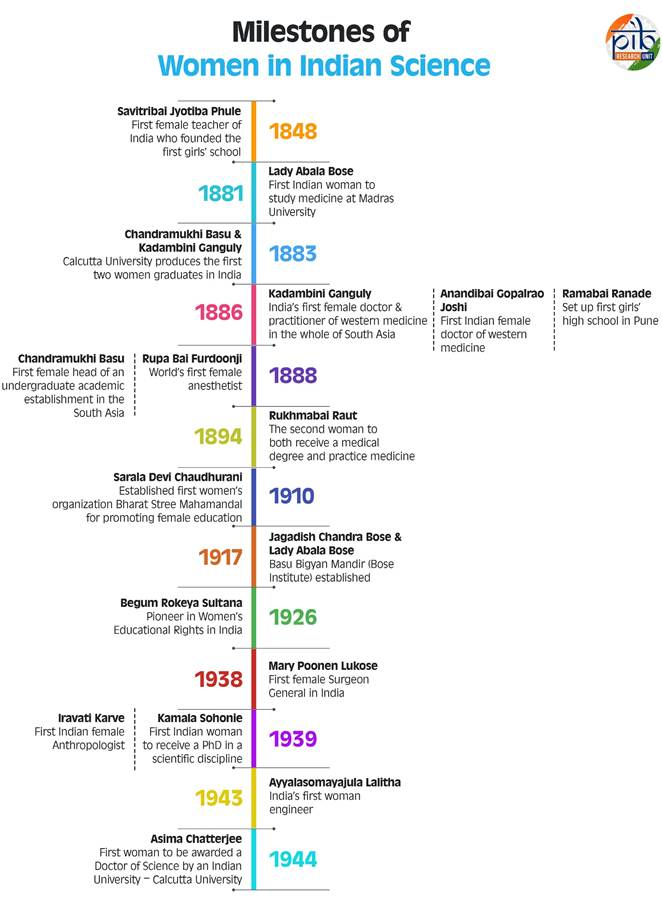
India’s Initiatives to Boost Women’s Participation in STEM
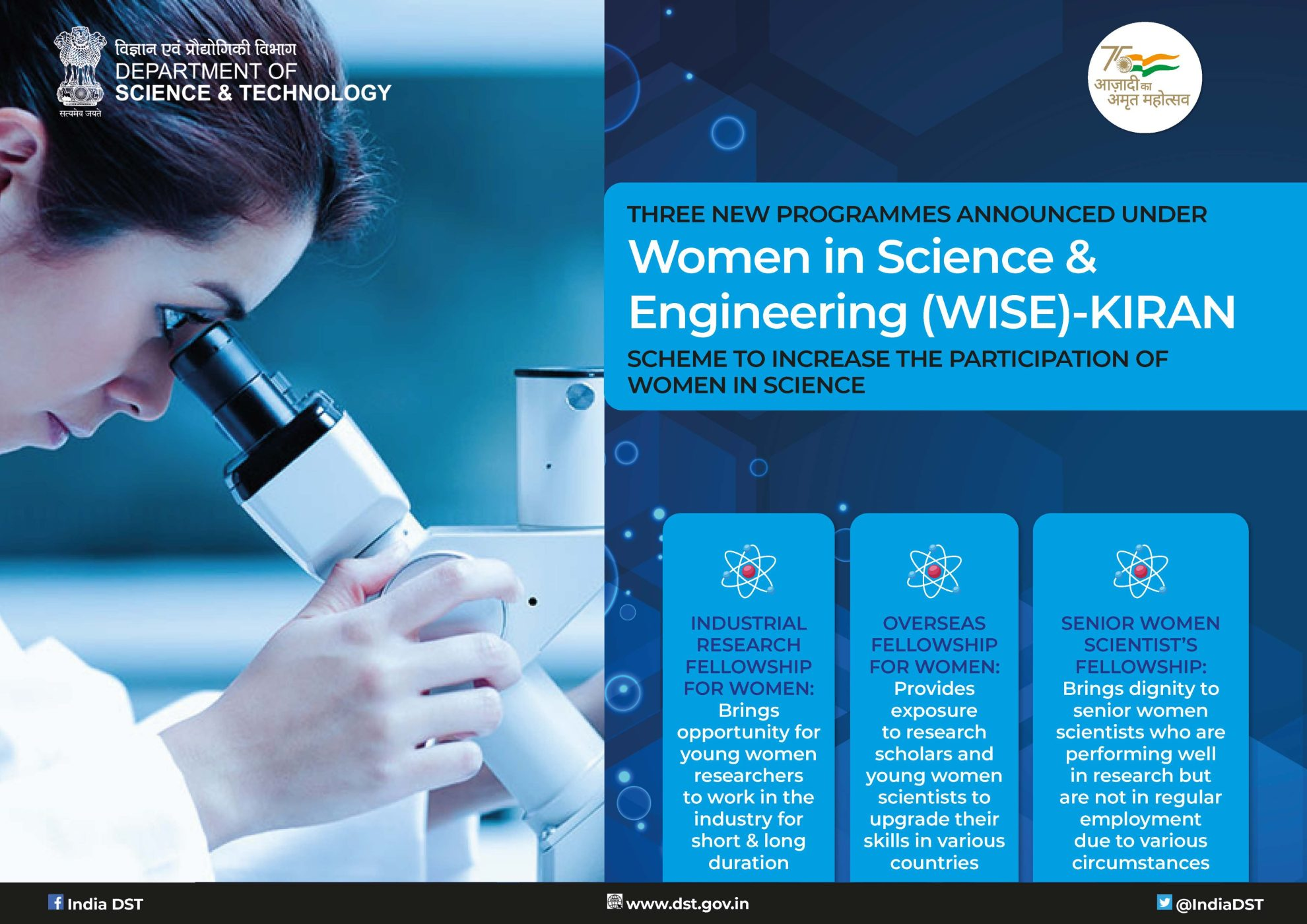
BioCARe Fellowship: This initiative provides support to women scientists working in biotechnology and related fields, enabling them to establish rewarding research careers.
Technology Business Incubators (TBIs) at Women’s Universities: TBIs have been set up at IGDTUW (Delhi), SPMVV (Tirupati), and the iTBI at DTU, aimed at promoting women-led innovation and fostering gender inclusivity in entrepreneurship.
Challenges Faced by Women in STEM
Dropout Rates & Societal Challenges: Women pursuing careers in STEM often face discontinuities due to caregiving responsibilities, arduous work policies, and challenges upon re-entering the workforce. Cultural norms frequently discourage their involvement, exacerbating the gender gap in scientific fields.
Workplace Challenges: Gender biases, lack of mentorship, and a scarcity of women in decision-making roles hinder professional advancement. Access to research funding and leadership positions is also limited for women.
Institutional Barriers: The absence of gender-sensitive policies—such as maternity benefits, flexible working arrangements, and limited access to gender-specific data—impedes women’s retention and equity in STEM disciplines.
Proposed Solutions Moving Forward
Adopting Gender-Inclusive Policies: Organizations should implement gender-sensitive hiring practices, establish leadership quotas, and offer research grants aimed at women scientists, alongside promoting flexible work policies and family support programs.
Encouraging Leadership & Mentorship: Building mentorship networks and promoting women into leadership roles within academia, research, and policymaking is crucial.
Ensuring Workplace Equity: Institutions should adopt transparent evaluation and promotional practices to guarantee equal pay and recognition for their female employees.
Fostering Women Entrepreneurship: Enhancing initiatives like NIDHI, BioCARe, and TBIs to bolster women-led start-ups in the STEM sectors will facilitate significant advancements.
Global Collaboration: India can benefit from learning from successful models deployed in countries with higher female representation in STEM, coupled with establishing global partnerships and research exchange programs for women researchers.
Drishti Mains Question:
Q. What are the factors limiting women’s participation and empowerment in STEM fields in India? Suggest effective policy measures to encourage gender-inclusive growth in science and technology.
Previous Year UPSC Civil Services Examination Question (PYQ)
Prelims
Q. Which of the following entities provides the ‘Global Gender Gap Index’ ranking for countries worldwide? (2017)
(a) World Economic Forum
(b) UN Human Rights Council
(c) UN Women
(d) World Health Organization
Ans: (a)
Q. Two initiatives launched by the Government of India for women’s development are Swadhar and Swayam Siddha. Assess the differences between them. (2010)
Consider the following statements:
‘Swayam Siddha is targeted at individuals in challenging circumstances, such as women who have survived natural disasters or terrorism, released women prisoners, and those with mental challenges, while Swadhar focuses on the holistic empowerment of women via Self Help Groups.’
‘Swayam Siddha is executed through Local Self Government bodies or respected Voluntary Organizations, whereas Swadhar operates through ICDS units established in states.’
Which of the above statements is/are correct?
(a) 1 only
(b) 2 only
(c) Both 1 and 2
(d) Neither 1 nor 2
Ans: (d)
Mains
Q.1 “Empowering women is essential for controlling population growth.” Discuss. (2019)
Q.2 Analyze the positive and negative impacts of globalization on women in India? (2015)
Q.3 Encouraging male participation is crucial to eliminate gender bias in women’s organizations. Comment. (2013)


